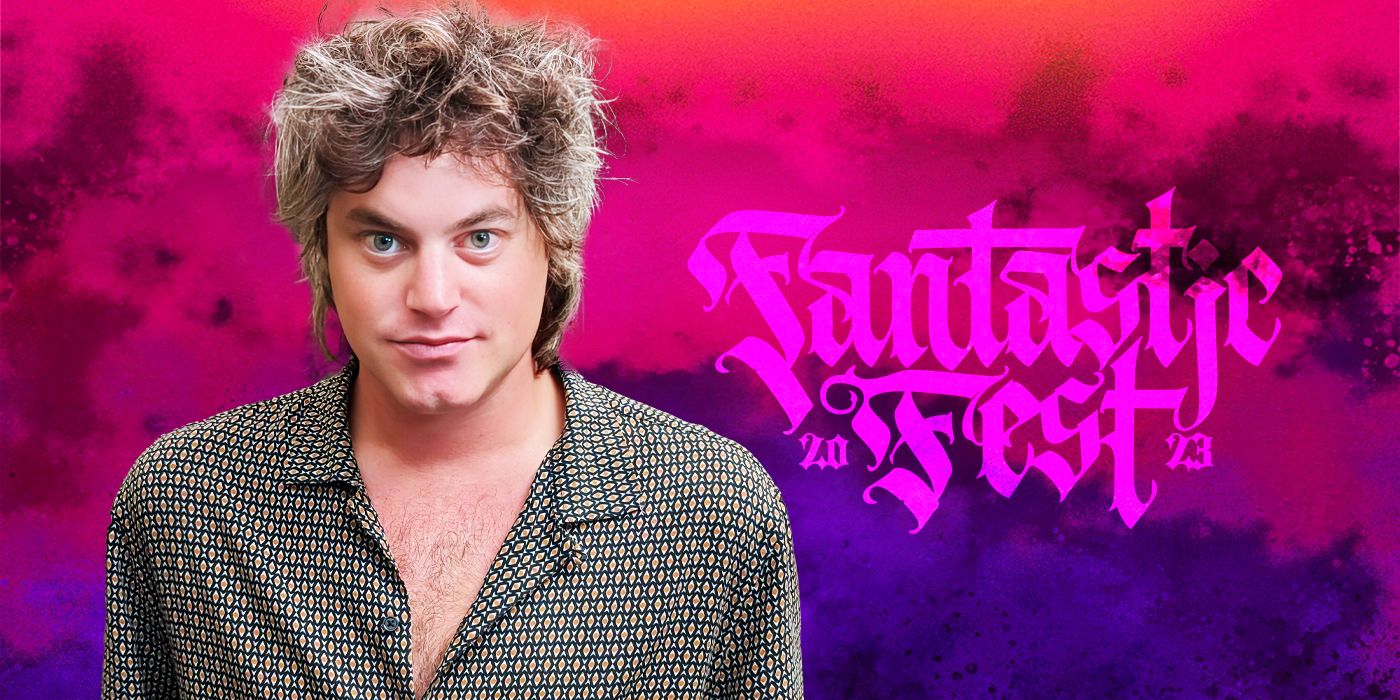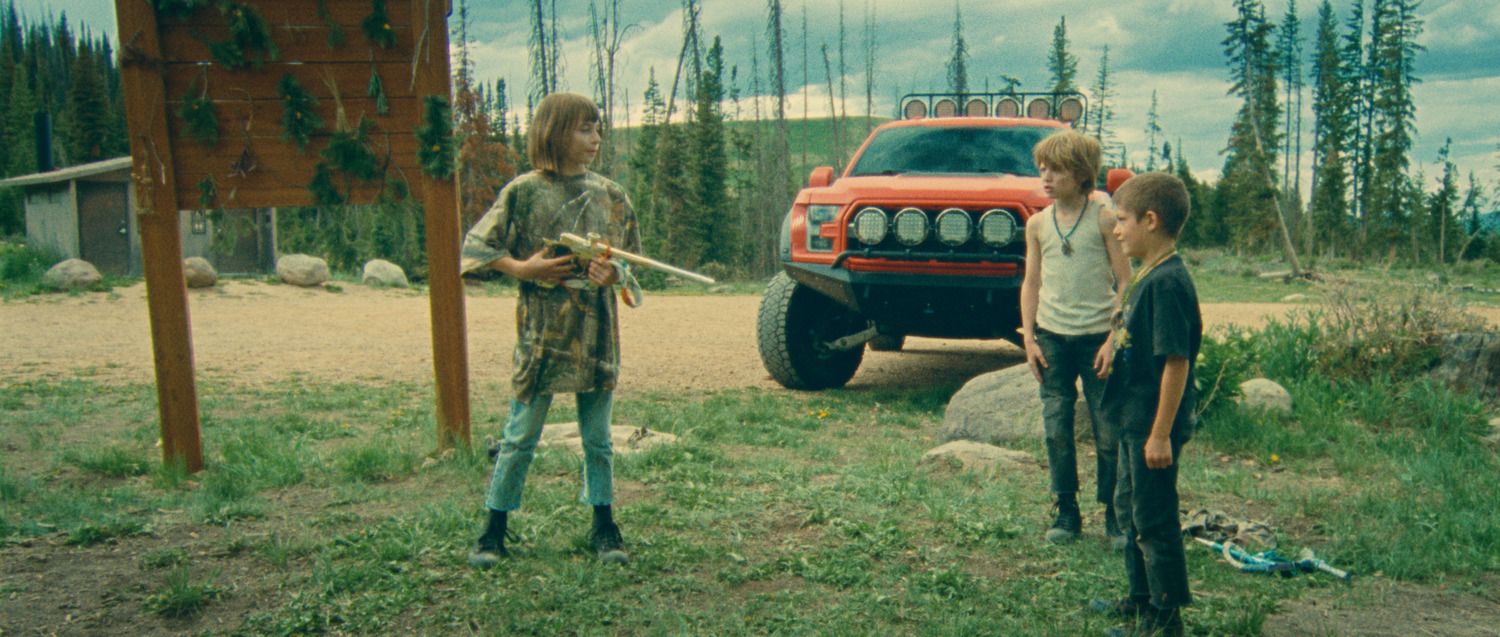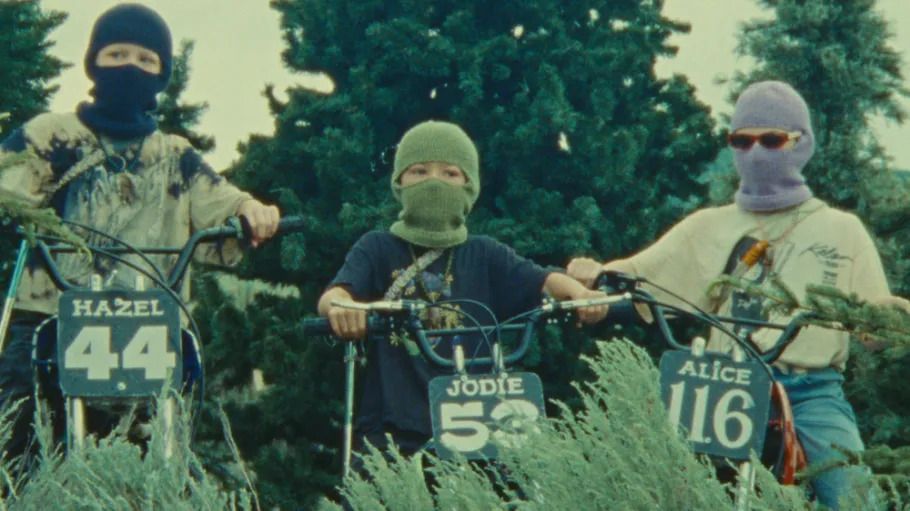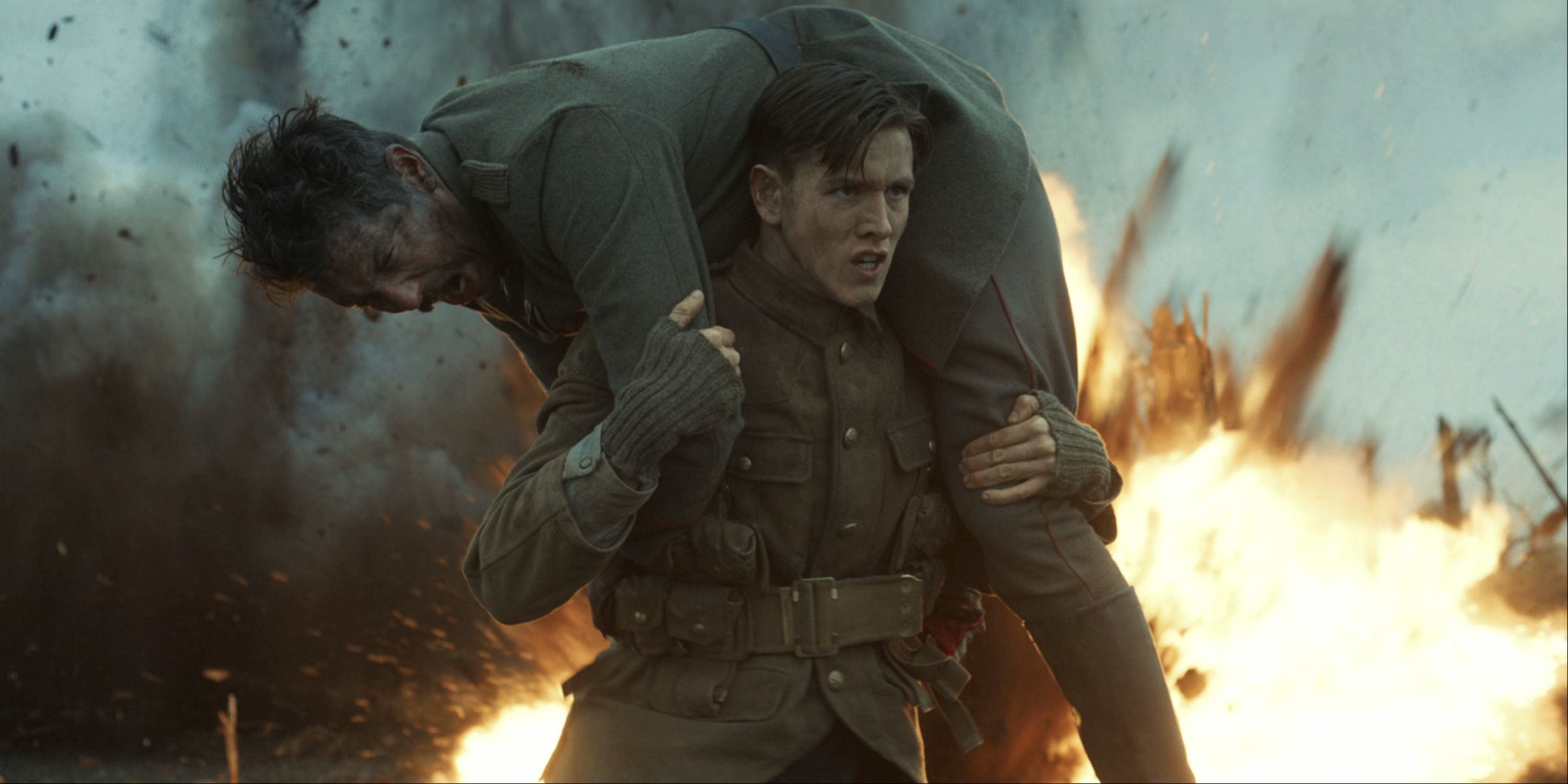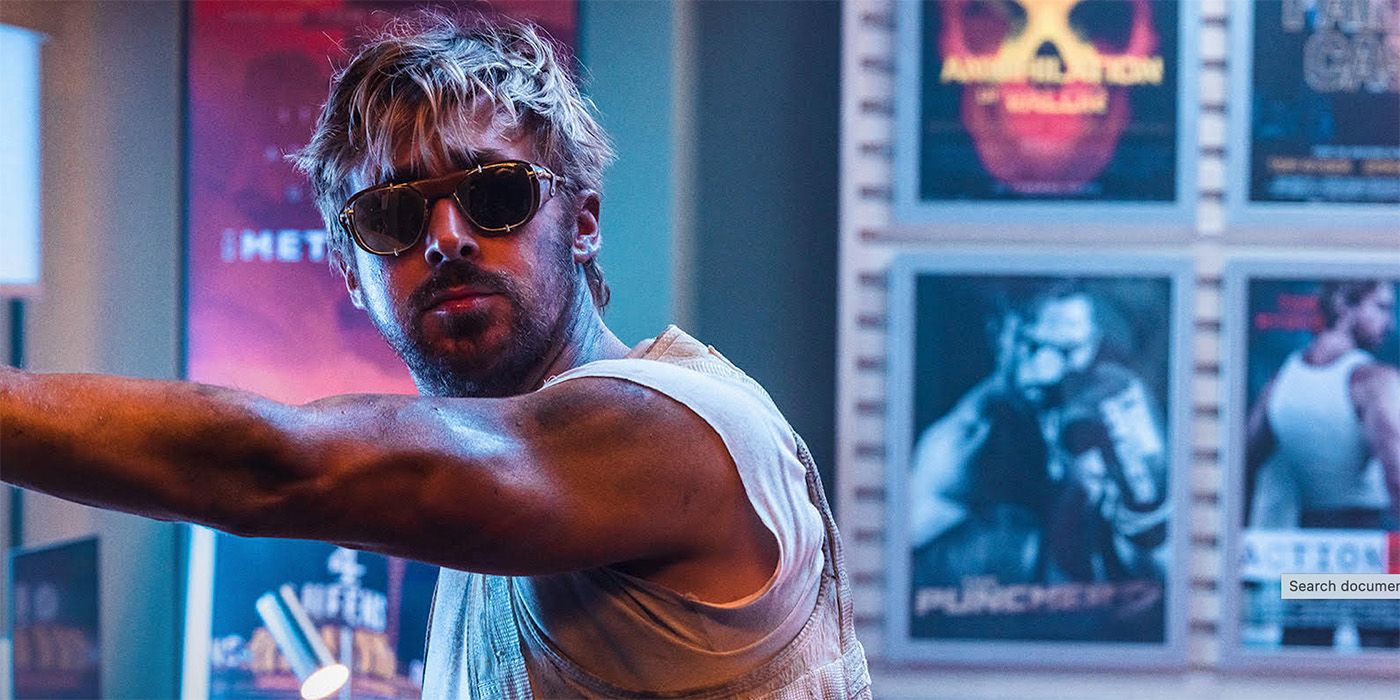The Big Picture
- Weston Razooli’s “neo-fairy tale,” Riddle of Fire, was a major standout at Fantastic Fest 2023.
- The film follows four mischievous kids on a quest to gather ingredients for a blueberry pie while battling witches, huntsmen, and trolls along the way.
- At Fantastic Fest, Razooli discussed directing his first feature, working with a young ensemble, and filming on 16mm.
Weston Razooli’s “neo-fairy tale,” Riddle of Fire, was like unearthing buried treasure while battling corpses and unthinkable horrors at this year’s Fantastic Fest. For Collider’s Perri Nemiroff, the monsters were just as fun, but Razooli’s feature directorial debut stood out for its more whimsical, kid-centric narrative and his “stylized fairy tale” vibes, all captured on 16mm.
Razooli had a very clear vision for what he wanted to accomplish with Riddle of Fire. Inspired by the charm and scrappiness of the 1920s The Little Rascals and mischievous kids of the ‘90s, this adventure is set against the backdrop of the piney, Wyoming mountains. When brothers Hazel (played by Charlie Stover) and Jodie A’Dale (Skyler Peters) are tasked with obtaining their mother’s favorite blueberry pie along with the help of their good friend Alice (Phoebe Farro), their errand sets them on a treacherous course, battling a witch, a huntsman, and a troll, and befriending a fairy (Lorelei Olivia Mote)! The movie also features Lio Tipton, Charles Halford, Austin Archer, and more. Full of rich imagery, paintball shenanigans, and wit, the movie has since been picked up by Vinegar Syndrome and Yellow Veil Pictures with plans for a limited theatrical release in 2024.
Riddle of Fire made the festival circuit rounds, first premiering at Cannes, then TIFF, and finally in Austin at Fantastic Fest where Razooli stopped by Collider’s interview studio to talk with Perri about his own fantastical journey getting this indie adventure made. He recounts the “hard, long road” getting his film funded, shares his advice for wrangling a cast of kids, discusses why there was no other option but to film on 16mm, and tons more. Check it all out in the video above, or you can read the full interview in the transcript below.
PERRI NEMIROFF: This will be the hardest question I ask you today; can you give everybody a brief synopsis of your movie just in case they don’t know about it yet?
WESTON RAZOOLI: Riddle of Fire is, I call it, a neo-fairy tale. It’s an action-adventure comedy about four little kids in Wyoming who ride dirt bikes and have paintball guns and are sort of these terrors around the town. They’re kind of like goblins, and they’re on a little quest to gather the ingredients for a blueberry pie for their sick mother. So it’s kind of like Hansel and Gretel and Little Red Riding Hood, but on motorcycles and with paintball guns.
I was thinking that this was a hard film to synopsize and actually give people the feeling of what it was, but I feel like that did a pretty good job.
RAZOOLI: Thank you. [Laughs]
I also walked out of this movie and immediately wanted to go buy a paintball gun.
RAZOOLI: Oh, really? Yeah, that’s the goal. I really want to make everything as satisfying as possible. Seeing loading the guns and riding the dirt bikes and breaking ceramics gnomes, like satisfaction.
You feel it. I’m sure it comes from the cinematography, but also the sound design, too. Something about the noise of shooting a paintball gun gives you the feel that what’s in their hand is in yours as well, and that made me want to walk out the door and do everything they do.
RAZOOLI: That’s really cool. I’m glad you got that.
Very much.
Going back to the beginning with this because this is your feature directorial debut and that is a huge deal and should be celebrated. So you wake up one morning, you say, “I wanna make a feature film.” What did you think was step one to getting a green light at the time, and now having done it, would you recommend that step to another filmmaker who wants to make their first feature?
RAZOOLI: The word green light doesn’t really apply to me or this type of movie. I mean, it’s as in indie as it gets. It took me a long, long time to — I completely raised the funds myself and put it together. This is as indie as it gets.
When you are raising the funds for a movie yourself, what’s the first piece of funding or thing that clicked into place that made you think, “This isn’t just a dream that I’m whipping up myself, but this is actually gonna happen?”
RAZOOLI: I guess when there’s certain people, bigger people, that were attached at certain film festivals that promised me large amounts of money once I had secured, like 80%. Those were very exciting, I guess, which problems ensued after. But yeah, I don’t know, stuff like that. It was really piece by piece by piece, and it was a hard, long road. And then we shot the film for, like, half the budget. It never got fun or easy until it was accepted.
[Laughs] Until it was done, and you knew it was going to screen for people. Whether it’s a first feature or not, I feel like that story is often the repeat for every single film you make.
RAZOOLI: Yeah, I don’t think so. I think the next one will be easier. We’ve already got some funding and stuff.
I like hearing that! When you come out the gate so hot and successfully, I feel like you deserve at least that little bit of ease.
RAZOOLI: Thank god. Yeah, it’s good.
You directed some shorts and music videos before you made this feature, so can you pinpoint something about those directing experiences that came in handy here, but then also maybe a learning curve that you experienced making your first feature?
RAZOOLI: Any chance you get to shoot anything is great because it’s just practicing and practicing. But a lot of those were me learning shooting on film, on 16mm especially, and working with my DP, [Jake L. Mitchell], that I worked with on Riddle. So getting used to the working relationship and workflow with him and shooting film. So I learned mostly a lot of that from shooting those things. Learning curve for a feature? God, I don’t know. It’s too much. Too many things.
Like everything? [Laughs] You brought up 16mm, so I’ll go there next because I feel like many are encouraged to shoot on digital for a wide variety of reasons. Can you pinpoint something about shooting on film that maybe would intimidate people, but it’s actually very reasonable to do and you would recommend them try it if that’s where their minds are going to best support their story?
RAZOOLI: Yeah, I would recommend it. It really hones everyone’s focus incredibly because you know how special this medium is, and how limited it is, and how much you have of it. So everyone’s really, really on their game, and every shot is important and everything. Also, shooting on film, specifically for my work — I love to shoot on film because Riddle of Fire is a very stylized fairy tale movie and film is the medium that I feel confident with using to pull off that stylized vibe and to fully accept this stylized fairy tale world, which I don’t think is totally necessary for drama. It all depends what you want, but I think for this genre and this vibe, film really completes it.
From the audience perspective, it felt right. I’m glad you went that route.
I was reading somewhere that pretty much all the scripts you’ve written are about children or teenagers, so I’m assuming you had a couple of very influential movies in that department that you saw growing up. What is a movie that you saw and loved that you wanted to emulate because it captured that experience, but also what is something that you think is missing from those movies that you wanted to make sure yours had?
RAZOOLI: That’s a good question. I loved The Little Rascals growing up, and the actual original show, Our Gang, from the ‘20s. There’s something really charming about funny kids beating up mean adults or playing tricks on adults. I loved all that, but I wanted them to kind of have the resources of like Macaulay Culkin in Home Alone, you know? And be experts how much he is an expert. Be like him but be scrappier, I guess. So that’s kind of the combination I would say that became Riddle of Fire.
Speaking about your cast, this movie doesn’t work as well as it does unless you find the perfect kids for these lead roles, and they are something else. Did you find that the four of them had a shared quality that signaled to you they’d be ready to jump in and do this?
RAZOOLI: Yes, they did have a shared quality, and that quality was – this kind of relates to the last thing I said – each of the kids seemed like timeless child actors that could have been equally at home in a ‘20s, ’30s Little Rascals short, or like a ‘70s Disney live-action movie or ‘80s or ‘90s, you know? Since they all had that quality, I thought that they would get along and they would be able to do it, which they did.
I want to go back to the cast, but you bring up the timeless quality. One thing that I found really interesting in your movie is that it does have a timeless quality where it feels like the story could play out in any decade, but then you also do include cell phones and the opportunity to be able to research on the spot. Did you always know you were going to incorporate that or did you ever consider removing that?
RAZOOLI: Yeah, I did for a few reasons. One of them was because I wanted to have the optimistic view that real, true fairy tale adventures could still happen today even with all of what we have, if the right kids are doing it or whatever. Second of all, it’s just easier. I mean, it’s a super low-budget movie, so I had to set it now in order to avoid any period issues.
It works very well. I appreciate the idea of making sure that that kind of adventure story still feels possible today because it does feel like we’re moving further and further away from that being a reality right now.
RAZOOLI: Yeah, I guess so. But I mean, it happens. I’m from Utah and there’s so many little towns where you see little motokids running around, like little kids going around with bow and arrows and stuff.
All I can picture is my niece and nephew sitting like this with an iPad in front of their face all the time.
RAZOOLI: It’s so sad! It scares me. it scares me so much!
If they wind up getting creative with the devices, maybe I’ll feel really good about that, but yeah, it’s not the same anymore.
To highlight your four leads here even further, can you tell me something about each of them that made them a standout actor and maybe even called for something different from you as an actor’s director?
RAZOOLI: Skyler Peters, who plays Jodie, when I cast him, I didn’t realize how hard he would be to understand. The first day of shooting I didn’t know what we were gonna do, and then I had to decide to subtitle him. I was like, oh yeah, that solves the problem. It makes it funnier! And it’s funnier because he’s the most eloquent one of the gang. And then he was the one that wanted to add more lines and so he would ask me — or his mom would ask me, “Hey, is it okay?” Like when they have the crab legs and the other kids want to leave the crab legs with the villains, he wanted to say, “I’m not leavin’ without these babies!” And I was like, “Yeah, sure, you can say that!”
Hazel, Charlie Stover, he seemed like the epitome classic American kid, like Tom Sawyer, Huckleberry Finn. So yeah, he fit right in. Phoebe Ferro, Alice, she just had this really angsty little kid energy, sort of like Tatum O’Neal in Paper Moon or the girl from Zazie dans le Métro. Those were the kind of influences to her character. And then Lorelei Olivia Mote, who plays Petal, she had the funniest audition tape where she was just like hopping around chairs being a little fairy, and she was just so funny and so charming. She was great. They’re all great. And they were the only kids that got callbacks. They were the only kids that I was like, “Maybe they can work.”
Oh, I love that. They are really something else in this.
You bring up the subtitling for Jodie, and I was reading that you had a couple of other issues in the edit that you had to cut around. Can you maybe name a couple of them and tell us how you wound up cutting around them?
RAZOOLI: Editing this movie was truly a challenge because no take was clean, right? So it was kind of a Tetris game of, “What can cut with what?” Like, the wide shot can cut with this two-shot into this close-up, and how do I get out of that because I can’t cut back to the wide because the continuity doesn’t make [sense] because they’re facing the other way or something. Every scene just took a couple of weeks at least to edit, like every scene. One scene took me a month to edit.
Which scene is that?
RAZOOLI: It was when they hot-wire the car. It’s sort of a longer scene. That was the final thing we shot, it was the final day, everyone was so tired. The kids were so tired, and it was hell, yeah. So that took forever to edit.
For what it’s worth, the edit feels so fluid and natural to me, which is hugely impressive. And when you bring up the thing with subtitling Jodie, that feels like the perfect example to me of something where maybe it doesn’t go as planned, but it actually adds unexpected magic that makes the movie even stronger.
RAZOOLI: Yeah, I mean, that’s filmmaking. Especially shooting a feature, it’s like, you’ve got to roll with it, you’ve gotta make it work. The opening heist was not supposed to be inside. They were actually supposed to be robbing a delivery truck that was showing up with the Otomo boxes, and the delivery driver was moving them and they were gonna go in the truck and get them, but there was a thunderstorm and so we couldn’t shoot, and it was like, “Well, there is this sick warehouse in there. They can go in. It could be a huge heist.” And it was way cooler! It was way better!
It looks cooler, too, because you use certain techniques that the biggest-budgeted spy movies use. I love that quality.
I was reading a little bit about a point system you had for the kids. I want to know which of the actors got the most points and who got the least points.
RAZOOLI: [Laughs] Yeah, Jodie, he got the least. He didn’t care. Or he would start losing and he didn’t care. But Charlie Stover, Hazel, he definitely won. He got the most points. He was on it. But yeah, basically, the point system was to have them reset after cutting, because when I called cut, they would all want to run away and look at the camera, look at other things. So whoever reset the quickest would get a point, and then at the end of the day, they would get a prize, and it was usually a prop from that day.
When I see a movie like this with so many key performances from kids, I think back to film school where one of the big things they tell you is never make a movie with kids and don’t make them with animals either. Having so successfully directed a group of very young actors, what piece of advice would you give another filmmaker who wants to make a movie with kids but is afraid because they heard things like that?
RAZOOLI: I would suggest writing something that is on the lighter side and that is fun and action-based because [with] kids, I think, it’s a lot easier – I mean, maybe, I don’t know – to direct a sort of more fun action-based comedy movie rather than a dark drama. That would be pretty tricky, I think.
They seem to be having so much fun promoting this. Your Cannes photos, the group photos, are way more exciting than the standard ones we get!
RAZOOLI: Yeah, we had a blast. It was the first time for everybody, first festival, first film, first Cannes. Everyone was really, really excited and happy, and they were having so much fun.
Big question, but because you said you’re already moving forward with your next feature — and I love asking this because I’m a big believer that nobody in this business says good job to themselves nearly enough. We say it to other people and that is wonderful, but can you pinpoint something specific you accomplished on this movie that you could look back on and say, “Damn, I’m proud I pulled that off,” and it’ll give you confidence on your next film?
RAZOOLI: I am very proud of this movie given the resources that I had to make it. It was a very, very tiny budget and a mini amount of shoot days. And, as you said, kids and it’s SAG so you get eight hours a day, but that means really six hours. For the success that this movie has had, it’s a miracle almost. Yeah, I’m proud of it.
As you should be. For the multitude of films out there that think they need money, money, money to be able to bring their vision to screen, can you give us an example of a technique you used with very little that maybe more productions should consider?
RAZOOLI: Taxidermied elk head. [Laughs] I don’t know, for the prince of the mountain for a second we were like, “Do we do a CGI elk?” And that’s not really in the cards, so it was a taxidermied elk head that I was puppeteering. I mean, it’s kind of funny, but it serves its purpose. It fits the aesthetic of the movie.
You have been on the festival circuit with this film and one of the best things about film festivals is bringing your own film there, but also getting to see others and being able to meet and support other filmmakers. During this film’s festival run, can you pinpoint something you saw another filmmaker do in their movie that made you go, “Damn, that is something else and it inspires me?”
RAZOOLI: Oh god, I feel kind of bad, but I haven’t really seen any movies. The only other movie I saw – well, I saw two other movies at Cannes and one of them was Maïwenn’s movie with Johnny Depp, Jeanne du Barry, which looked super beautiful, I’ll say. It was very beautiful. It made me very much want to do a Victorian period piece.
What about any people you’ve met along the way?
RAZOOLI: I met [Pedro] Almodóvar.
That’s pretty cool!
RAZOOLI: I met Jim Jarmusch on the red carpet. But yeah, Almodóvar, he was so nice and he’s like my hero. He’s probably my favorite living live-action film director. And yeah, he remembered my name later. [Laughs] And I showed him my Cahiers du Cinéma cover. It was really, really cool.

